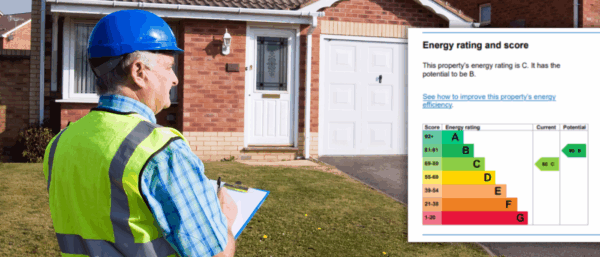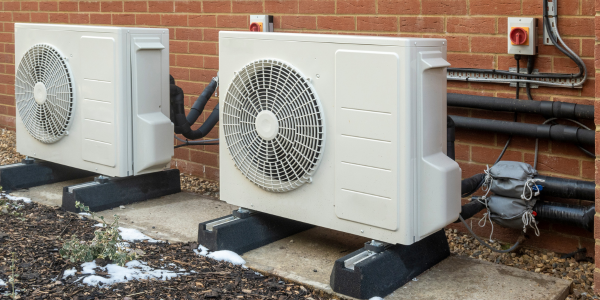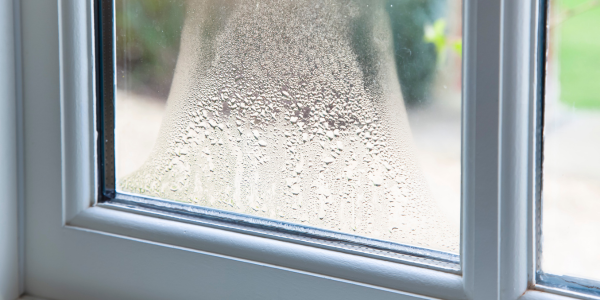A Day in the Life of a Domestic Energy Assessor: How RdSAP 10 Has Changed the Role.

Author: John Allen, Energy Assessor & Retrofit Expert, Founder of Bluewire Hub Ltd
When I first qualified as a Domestic Energy Assessor (DEA), I knew the role involved visiting properties, performing calculations, and producing Energy Performance Certificates (EPCs). What I didn’t fully appreciate was just how varied, detailed, and people-focused the work would be.
My work at Bluewire Hub has helped me combine technical accuracy with clear, supportive communication. I’ve realised that the role is as much about engaging with clients and building trust as it is about collecting data.
With the introduction of RdSAP 10 (on 15th June 2025), the scope of the job has evolved again. The latest version requires more detailed data collection, additional inputs, and places a greater emphasis on evidence and accuracy. For anyone considering becoming a DEA, it is an exciting time to enter the profession – but it is important to understand the day-to-day demands.
This article shares insight into a typical working day including how I prepare for an assessment and the impact RdSAP 10 has had on how I carry out my duties.
Pre-Assessment Guidance
The work begins well before I arrive at a property. A key part of my role is providing pre-assessment guidance to clients. This includes explaining what an EPC entails, what documentation will be useful, and how they can support me in gathering accurate information.
Clients often have misconceptions about the process. Some expect a brief walk-through; others anticipate far more disruption than occurs. Setting out the process clearly ensures they know what to expect and allows me to plan effectively.
I usually ask clients to prepare paperwork such as Building Regulations certificates for extensions, certificates confirming insulation, or evidence of window upgrades. With RdSAP 10’s increased evidence requirements, this stage is more important than ever. Clear evidence ensures features can be accurately recorded in the EPC.
Providing this guidance smooths the visit and builds trust, showing clients that my role is about capturing an accurate picture of their property, not just ticking boxes.
Pre-EPC Research
Alongside client communication, I carry out pre-EPC research. This saves time on site and provides a clearer picture of the property’s history. I might use resources like:
- Local authority planning records – useful for spotting extensions that might not be immediately obvious.
- Property listings from Rightmove or Zoopla – these can give clues about property and detachment type and occasionally allow me to view previous agents’ floor plans. While these plans provide a general sense of layout, I always produce my own measured plan on site for calculations.
- Historic maps and aerial images – helpful for understanding the age and development of an area.
- Land Registry and sold price data – valuable for placing the property in context.
- Valuation Office Agency council tax checker – particularly useful when estimating the construction date of properties built after 1993, providing a reliable guide to default assumptions in RdSAP.
This research doesn’t replace on-site inspection, but arriving prepared ensures I can quickly reflect features such as extensions in my floor plan and confirm construction types. RdSAP 10 places more emphasis on accurate measurement and categorisation, from window dimensions and room-in-roof types to detailed wall, roof, and floor information.
On-Site Assessment
The property visit is the heart of the role. I begin with an external review, noting property type, detachment, and construction. After introductions and confirming the process, I move methodically through each area, starting downstairs, recording details that RdSAP 10 requires, including:
- Room dimensions and ceiling heights
- Glazing types
- Heating systems, controls, and secondary heating
- Water heating and storage
- Lighting
- Loft and roof spaces where accessible
Photography is an integral part of the process, providing a visual record that supports the software data entries. I also make time to answer questions and explain what I’m doing and why, helping clients feel informed and reassured while ensuring the assessment runs smoothly.


After capturing all the details, the real test lies in accurate data entry and interpretation. This is where the recent changes to RdSAP 10 have the most impact.
The Impact of RdSAP 10
RdSAP 10 has introduced several changes that make assessments more detailed and precise. For example:
- Building age bands – the number of age categories has increased, requiring even greater accuracy when identifying when different parts of a property were constructed. This directly affects default assumptions in the software and how thermal performance is modelled.
- Room in the roof – assessors must now specify the type of room in the roof and whether a simplified or detailed approach is used, taking additional measurements for gables and common walls where relevant.
- Windows and glazing – all windows must be measured, with new options for frame types, permanent shutters, and more precise glazing age categories.
- Ventilation – expanded options include open fireplaces, chimneys, flues, and mechanical systems. Air pressure test results can now be included where evidence is available.
- Walls, roofs, and floors – enhanced options allow more precise specification of wall types, insulation thickness, roof insulation, and retrofitted floor insulation, improving how energy performance is calculated.
- Other elements – lighting, water heating, PV battery storage, and heated basements now have more detailed input options to reflect modern technologies and current energy efficiency practices.
Practical impact on my workflow: RdSAP 10 has made assessments more detailed and time intensive. I now spend more time preparing, more time on site, and more time entering data. While this increases the potential for errors if something is missed, the additional training has made me a more accurate and capable assessor. These changes elevate the quality of the EPC, ensuring it is seen not just as a regulatory requirement but as a reliable, trusted tool that genuinely reflects a property’s energy performance.
Producing the EPC
Back in the office, I review data collected using the accreditation company’s app before lodging the report. RdSAP 10 adds data points and input options, making accuracy crucial. The app captures images and key information in real time, reducing errors and ensuring all information is recorded.
I cross-check notes, photographs, and documentation. Where evidence is unavailable, I follow the standard conventions, providing a structured framework for consistent data collection and interpretation.
Once finalised, I lodge the EPC via the app and explain the results to clients. Many want to understand the recommendations, which allows me to guide them through practical energy efficiency improvements. In this way, the EPC becomes more than a compliance document – it supports informed decisions about energy use and investment.
Experience and Mentoring
Experience shapes my approach. Each assessment builds skills in recognising construction types, spotting details, and communicating findings clearly.
I mentor new DEAs through Bluewire Hub, providing one-to-one support alongside assessments. This allows new assessors to ask questions, explore real-world scenarios, and build confidence. Mentoring covers technical knowledge, judgement, accuracy, and communication – skills that are even more critical with RdSAP 10. Sharing insights helps raise industry standards and supports the next generation of assessors.
Why Now is a Good Time to Become a DEA
Energy efficiency is a national priority, with EPCs central to property sales, rentals, and retrofit work. RdSAP 10 reflects changing expectations with sharper detail, new technologies, and higher accuracy requirements.
New entrants train with the latest tools and knowledge. Being a DEA today is about more than recording data, it’s about interpreting homes, explaining findings, and giving clients confidence to make informed decisions, while contributing to a broader energy efficiency agenda. As a DEA, you’re making a difference and helping homeowners and landlords to understand what they can do differently to create a more energy efficient living environment.
Final Thoughts
My work as a DEA involves far more than turning up with a clipboard. From pre-assessment guidance and research to on-site inspections and careful data entry, every stage matters.
RdSAP 10 makes the role more detailed and evidence driven. While this adds to the challenge, it also makes the work more rewarding. We provide homeowners and landlords with trusted information that influences how properties are managed and improved.
For anyone considering a career as a DEA, the work is varied, engaging, and meaningful. With preparation and support, it is a fulfilling career contributing to the future of housing and energy efficiency across the UK.
About the Author
John Allen has been a qualified Domestic Energy Assessor since 2013 and is the founder of Bluewire Hub Ltd based in Milton Keynes. Over the past decade, he has assessed a wide variety of properties and developed a deep understanding of both the technical and practical aspects of energy performance. In addition to his assessment work, John is an experienced trainer and mentor, supporting new DEAs to build confidence, interpret data accurately, and navigate the evolving requirements of Energy Assessments. His work combines hands-on expertise with clear guidance, helping homeowners, landlords, and fellow assessors make informed decisions about energy efficiency.
If you’re looking to become a Domestic Energy Assessor, enrol on Sava’s Level 3 Certificate in Domestic Energy Assessment to qualify through online study.